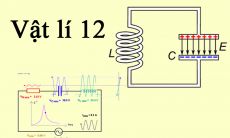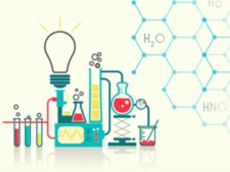Read the following passage and mark the letter A, B, C, or D on your answer sheet to indicate the correct answer to each of the questions from 41 to 47
About two thirds of the world’s population live in what are loosely called “developing countries”. Of course, strictly speaking, all countries are developing, but the term is used to describe those which are undeniably poor. Although the rich countries have only about 34% of the world's population, they earn about 90% of the world's income. They also possess about 90% of the world’s financial resources, and more than 80% of the world's scientists and technicians. They produce 80% of the world's protein - including 70% of its meat - and they eat it.
Thanks to an impressive succession of agricultural revolutions, man's food-growing capacity is now hundreds of times larger than it was at the turn of the 20th century, and we are now feeding more people than at any time in history. Nonetheless, the number of hungry and malnourished people is also larger than at any time in history. Admittedly, total food production has increased since 1961 in most parts of the world. Yet, per capita food production is little changed from the inadequate levels of the early 1960s. In short, world and regional production have barely kept up with population growth.
There appear to be five food problems. First, there is the problem of quantity - of every human being getting enough calories to provide him with the energy to work and progress. Second, there is that of quality - of everyone getting enough protein, vitamins, and necessary minerals. Next, there is the matter of distribution: we have to find satisfactory ways of transporting, storing and issuing food. Then there is the problem of poverty: many people in developing countries do not have money to buy food in sufficient quantity and of sufficient quality. And last, we must find ways of avoiding ecological side-effects. In other words, we must be able to grow enough food without further degrading our land, water and air.
A number of proposals have been made to improve food quantity and quality. An obvious and very necessary one is to limit population growth. Another is to increase the amount of land under cultivation by clearing forests and by irrigating arid land. Furthermore, the ocean (comprising 70% of the Earth's surface) is a potential source of more food, and there have been developments recently in the use of non-conventional proteins and synthetic foods. And last, various attempts are being made to increase the yield per hectare by developing or selecting new genetic hybrids of plants (the “Green Revolution”), by increasing the use of fertilizers, water, pesticides and herbicides, and by using modern agricultural and management techniques in poorer countries.
Câu 41 : What is probably a suitable title for the passage?
Suy nghĩ và trả lời câu hỏi trước khi xem đáp án
Lời giải:
Báo saiĐâu là tiêu đề thích hợp cho đoạn văn?
A. Cung cấp thức ăn cho thế giới
B. Sự thành công của Cách mạng Xanh
C. Vấn đề gia tăng dân số
D. Số lượng và chất lượng lương thực thực phẩm
Đọc cả bài để suy ra đáp án
=> Chọn đáp án D
Câu 42 : According to the author, the term “developing countries” _______.
Suy nghĩ và trả lời câu hỏi trước khi xem đáp án
Lời giải:
Báo saiTheo tác giả, cụm từ “các nước đang phát triển” ______.
A. không luôn cho nghĩa đúng
B. miêu tả một điều không thể phủ nhận
C. đề cập đến các nước đã phát triển
D. không có nghĩa là các nước nghèo
Thông tin: About two thirds of the world population live in what are loosely called “developing countries”. Of course, strictly speaking, all countries are developing but the term is used to describe those which are undeniably poor. (Khoảng 2/3 dân số thế giới sống ở nơi mà được gọi là “quốc gia đang phát triển”. Tất nhiên, nói đúng hơn là, tất cả các quốc gia đều đang phát triển nhưng cụm này được dùng để chỉ những quốc gia không thể phủ nhận là nghèo.)
=> Chọn đáp án B
Câu 43 : It can be inferred from the passage that _______.
Suy nghĩ và trả lời câu hỏi trước khi xem đáp án
Lời giải:
Báo saiCó thể suy ra từ đoạn văn rằng ______.
A. đất bao phủ gần 1/3 bề mặt Trái Đất
B. tất cả các nước thực tế đều là nước đã phát triển
C. nước bao phủ khoảng 1/3 khu vực Trái Đất
D. số lượng đất trồng trọt chiếm 70% bề mặt Trái Đất
Thông tin: Furthermore, the ocean (comprising 70% of the Earth’s surface) is a potential source of more food, and there have been developments recently in the use of nonconventional proteins and synthetic foods. (Hơn nữa, đại dương (bao gồm 70% bề mặt Trái Đất) là một nguồn tiềm năng cho thực phẩm, và có nhiều sự phát triển gần đây dựa vào việc sử dụng chất đạm phi truyền thống và thức ăn tổng hợp.)
=> Chọn đáp án A
Câu 44 : Which of the following is given explanation in the passage?
Suy nghĩ và trả lời câu hỏi trước khi xem đáp án
Lời giải:
Báo saiĐiều nào sau đây được giải thích trong đoạn văn?
A. nước giàu làm ra 90% thu nhập thế giới
B. sự kế thừa ấn tượng của cách mạng nông nghiệp
C. chọn các giống lai di truyền mới của thực vật
D. tránh tác dụng phụ về mặt sinh thái
Thông tin: And last, we must find ways of avoiding ecological side-effects. In other words, we must be able to grow enough food without further degrading our land, water and air. (Và cuối cùng, chúng ta phải tìm cách tránh tác dụng phụ sinh học. Nói cách khác, chúng ta phải có khả năng trồng đủ lượng lương thực thực phẩm mà không làm suy thoái đất, nước và không khí.)
=> Chọn đáp án D
Câu 45 : The phrase “land under cultivation” in the last paragraph refers to _______.
Suy nghĩ và trả lời câu hỏi trước khi xem đáp án
Lời giải:
Báo saiCụm “land under cultivation” trong đoạn cuối đề cập đến ______.
A. khu vực không được bao phủ bởi thực vật
B. đất bị khai thác
C. đất không thể sử dụng
D. quá trình canh tác
land under cultivation: đất đang canh tác
=> Chọn đáp án D
Câu 46 : The author mentions different ways of improving food quantity and quality in _______.
Suy nghĩ và trả lời câu hỏi trước khi xem đáp án
Lời giải:
Báo saiTác giả nhắc đến nhiều cách khác nhau để cải thiện số lượng và chất lượng thực phẩm ở _____.
A. cả đoạn văn
B. đoạn 4
C. đoạn 3
D. đoạn 2
Đọc cả bài đế suy ra đáp án
=> Chọn đáp án B
Câu 47 : It is stated in the passage that ________.
Suy nghĩ và trả lời câu hỏi trước khi xem đáp án
Lời giải:
Báo saiNó được nói trong đoạn văn rằng ______.
A. đa số các nhà khoa học và các kỹ thuật viên sống ở các nước đã phát triển
B. sản lượng lương thực bình quân đầu người cao hơn nhiều so với trong quá khứ
C. số lượng người đói và suy dinh dưỡng vẫn giữ nguyên
D. tổng sản lượng lương thực ở đa số các quốc gia trên thế giới hầu như không tăng
Thông tin:
+ Yet, per capita food production is little changed from the inadequate levels of the early 1960s. (Tuy nhiên, sản lượng lương thực bình quân đầu người thay đổi ít so với mức thiếu thốn ở đầu những năm 1960.)
=> B sai
+ Nonetheless, the number of hungry and malnourished people is also larger than at any time in the history. (Dù thế, số người đói và suy dinh dưỡng cũng cao so với lịch sử.)
=> C sai
+ Admittedly, total food production has increased since 1961 in most parts of the world. (Phải thừa nhận là, tống sản lượng lương thực thực phẩm đã tăng từ năm 1961 ở đa số các nước trên thế giới.)
=> D sai
+ Although the rich countries have only about 34% of the world’s population, they earn about 90% of the world’s income. They also possess 90% of the world financial resources, and 80% of the world scientists and technicians. (Mặc dù những nước giàu chỉ chiếm khoảng 34% dân số thế giới, họ làm ra khoảng 90% thu nhập thế giới. Họ cũng sở hữu 90% nguồn tài chính thế giới, và 80% các nhà khoa học và các kỹ thuật viên.)
=> A đúng
=> Chọn đáp án A
Đề thi thử tốt nghiệp THPT môn Tiếng Anh năm 2022-2023
Trường THPT Định An












